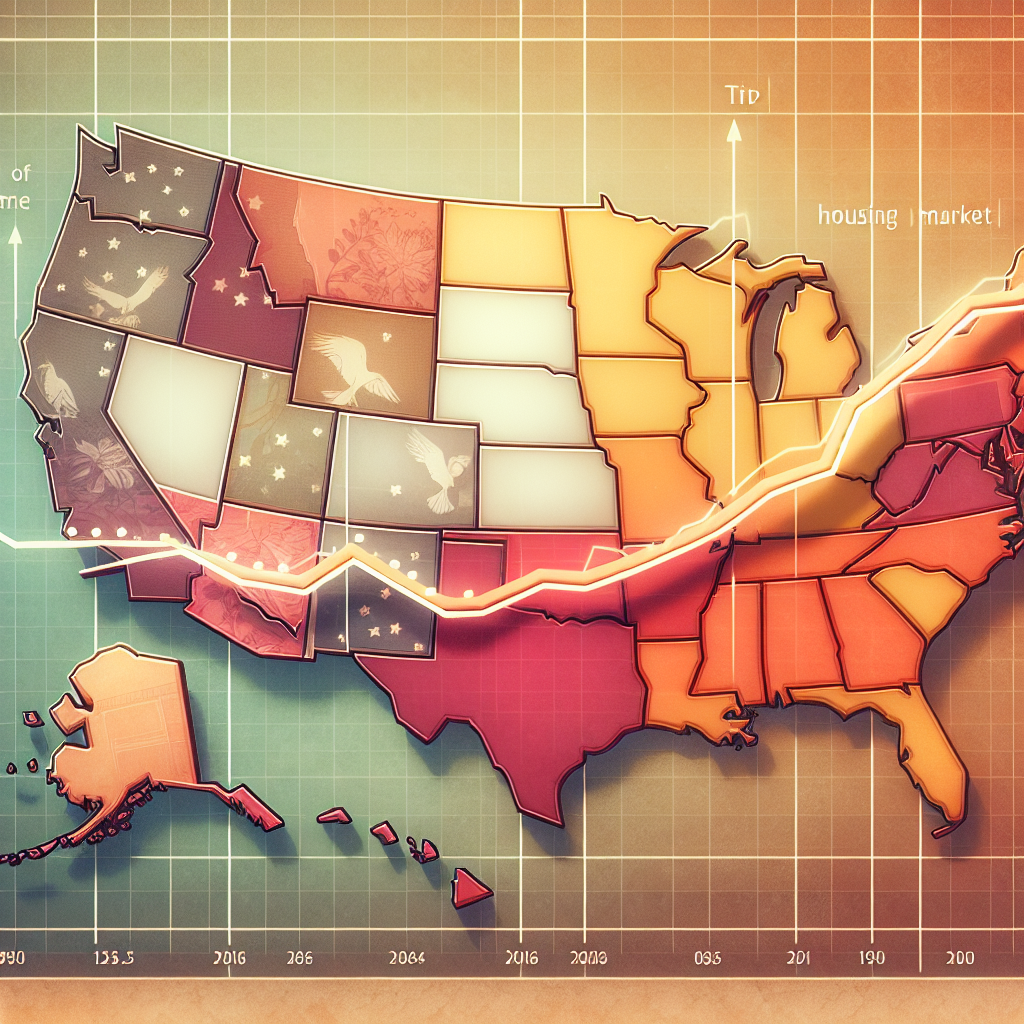-
Table of Contents
- Home Prices Plateau in the South as a New Top Housing Market Emerges in America
- The Southern Housing Boom: A Brief Overview
- Factors Contributing to the Plateau in Southern Home Prices
- 1. Supply and Demand Dynamics
- 2. Rising Interest Rates
- 3. Economic Uncertainty
- 4. Migration Patterns
- Case Studies: Cities Experiencing a Plateau
- Austin, Texas
- Nashville, Tennessee
- Atlanta, Georgia
- The Emergence of a New Top Housing Market
- Why the Midwest?
- Case Studies: Emerging Midwestern Cities
- Columbus, Ohio
- Indianapolis, Indiana
- Kansas City, Missouri
- Conclusion: A Shifting Housing Landscape
Home Prices Plateau in the South as a New Top Housing Market Emerges in America

The American housing market has always been a dynamic and ever-changing landscape. Over the past few years, the South has been a hotspot for real estate activity, with cities like Austin, Nashville, and Atlanta experiencing significant growth. However, recent trends indicate that home prices in the South are beginning to plateau. At the same time, a new top housing market is emerging in America, capturing the attention of investors, homebuyers, and real estate professionals alike. This article delves into the factors contributing to the plateau in Southern home prices and explores the characteristics of the new leading housing market.
The Southern Housing Boom: A Brief Overview
In the past decade, the Southern United States has seen a remarkable surge in housing demand. Several factors have contributed to this boom:
- Economic Growth: Cities like Austin and Nashville have become tech and business hubs, attracting a young, educated workforce.
- Affordability: Compared to coastal cities like San Francisco and New York, Southern cities have offered more affordable housing options.
- Quality of Life: Warm climates, lower cost of living, and a slower pace of life have made the South an attractive destination for many.
However, as with any market, what goes up must eventually level off. Recent data suggests that home prices in the South are beginning to stabilize.
Factors Contributing to the Plateau in Southern Home Prices
Several key factors are contributing to the plateau in home prices across the Southern United States:
1. Supply and Demand Dynamics
One of the primary reasons for the plateau is the shift in supply and demand dynamics. During the initial boom, demand far outstripped supply, leading to rapid price increases. However, as more homes have been built and listed, the market has begun to balance out.
2. Rising Interest Rates
Another significant factor is the increase in mortgage interest rates. As rates rise, borrowing becomes more expensive, which can dampen demand for home purchases. This has a cooling effect on the market, leading to more stable prices.
3. Economic Uncertainty
Economic uncertainty, driven by factors such as inflation and geopolitical tensions, has also played a role. Potential buyers may be more cautious about making large financial commitments, leading to a slowdown in the market.
4. Migration Patterns
While the South has been a popular destination for internal migration, recent trends suggest that some of this movement is slowing. As remote work becomes more normalized, people have greater flexibility in choosing where to live, which can diffuse demand across a broader range of locations.
Case Studies: Cities Experiencing a Plateau
To better understand the plateau in Southern home prices, let’s examine a few specific cities:
Austin, Texas
Austin has been one of the fastest-growing cities in the United States, driven by its burgeoning tech industry and vibrant cultural scene. However, recent data indicates that home prices in Austin are beginning to stabilize. According to Zillow, the median home price in Austin increased by just 2% in the past year, compared to double-digit growth in previous years.
Nashville, Tennessee
Nashville has also experienced rapid growth, fueled by its music industry and a strong job market. However, the city’s housing market is showing signs of cooling. The Greater Nashville Realtors reported that home sales in the area decreased by 5% in the past year, while the median home price remained relatively flat.
Atlanta, Georgia
Atlanta has been a magnet for businesses and young professionals, leading to significant housing demand. However, the market is beginning to level off. The Atlanta Realtors Association noted that the median home price in the metro area increased by just 3% over the past year, a marked slowdown from previous years.
The Emergence of a New Top Housing Market
As the Southern housing market stabilizes, a new top housing market is emerging in America: the Midwest. Cities like Columbus, Ohio; Indianapolis, Indiana; and Kansas City, Missouri are gaining attention for their affordability, economic opportunities, and quality of life.
Why the Midwest?
Several factors are driving the rise of the Midwest as a top housing market:
- Affordability: Compared to both coastal and Southern cities, Midwestern cities offer significantly lower home prices. This affordability is attracting first-time homebuyers and investors alike.
- Economic Growth: The Midwest is experiencing a resurgence in economic activity, driven by industries such as healthcare, education, and manufacturing.
- Quality of Life: Midwestern cities offer a high quality of life, with good schools, low crime rates, and a strong sense of community.
- Remote Work: The rise of remote work has allowed people to live in more affordable areas while maintaining their jobs in higher-cost cities.
Case Studies: Emerging Midwestern Cities
Let’s take a closer look at some of the Midwestern cities that are emerging as top housing markets:
Columbus, Ohio
Columbus has been experiencing steady growth, driven by its strong job market and vibrant cultural scene. According to Realtor.com, the median home price in Columbus increased by 8% over the past year, making it one of the fastest-growing markets in the Midwest.
Indianapolis, Indiana
Indianapolis is another city on the rise, with a growing tech sector and a strong healthcare industry. The Indianapolis Business Journal reported that the median home price in the city increased by 7% in the past year, reflecting strong demand.
Kansas City, Missouri
Kansas City is gaining attention for its affordability and quality of life. The Kansas City Regional Association of Realtors noted that the median home price in the metro area increased by 6% over the past year, indicating a healthy and growing market.
Conclusion: A Shifting Housing Landscape
The American housing market is constantly evolving, shaped by economic, social, and demographic factors. While the South has been a dominant force in recent years, home prices in the region are beginning to plateau. At the same time, the Midwest is emerging as a new top housing market, offering affordability, economic opportunities, and a high quality of life.
For homebuyers and investors, understanding these trends is crucial. The plateau in Southern home prices may present opportunities for those looking to buy in stable markets, while the rise of the Midwest offers exciting prospects for those seeking growth and affordability. As always, staying informed and adaptable is key to navigating the ever-changing housing landscape.
In summary, the housing market is a complex and dynamic entity. By keeping an eye on emerging trends and understanding the factors driving these changes, individuals can make informed decisions that align with their financial goals and lifestyle preferences.








